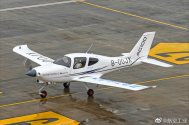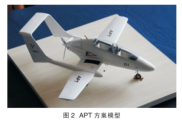What's the status of the L-15 acquisition regarding Uruguay? Did they choose another plane?
Probably safe to conclude that the deal is dead since there is no news after 10 years.
What's the status of the L-15 acquisition regarding Uruguay? Did they choose another plane?


now nearly 4 years later, PLAAF is still using CJ-6, but they are trying really hard to get rid of JL-8, and let the student directly jump into JL-10 after CJ-6...The three phases two trainers system was to replace the old three phases three trainers system. In the old system an intermediate trainer (JL-8) was needed because JJ-7's low speed performance was too poor and CJ-6's maximal speed was too low so there was a huge gap between CJ-6 and JJ-7. But JL-10 has much better low speed performance than JJ-7, so half of the problem was already solved. What they needed was a CJ-6 replacement with higher maximal speed, etc. Shilao suggests both CJ-7 and TA-20 (DART-450) fall short on the maximal speed requirement. Shilao hinted that the new primary trainer would be turboprop. The article was written in 2019. Now the 1,000kW class turboprop AEP100 has already begun civil certification progress. So engine problem is about to be solved.
now nearly 4 years later, PLAAF is still using CJ-6, but they are trying really hard to get rid of JL-8, and let the student directly jump into JL-10 after CJ-6...
in this case, CJ-6 or the primary trainer's performance is not that important anymore, it just let the student pilot to taste of flight, and conduct most of the traning on JL-10 then later J-10S or J-11BS
therefore the takeoff cost became the primer consideration and CJ-6 has a huge advantage on that, in compare with anything else
i doublt CJ-6 will take a year, probably only 6 months, pilot training normally start from year 3, it will take about 6 months for all the studies on the ground, the the second half the year to fly CJ-6The new system seems to be one year of initial+primary training on CJ-6, one year of advanced training on JL-10 and one year of conversion training. One year on CJ-6 is a long time and ideally you want to fly a lot of hours at initial/primary phase because the cost's low. CJ-6's performance, range and comfort all have room for improvement. I think the reason we're not seeing a new primary trainer right now is probably engine. They're either waiting for AEP80/100 or AEP60E (modernized WJ-9 with higher output and FADEC).
i doublt CJ-6 will take a year, probably only 6 months, pilot training normally start from year 3, it will take about 6 months for all the studies on the ground, the the second half the year to fly CJ-6
student in year 4 will fly JL-10 till graduation
post graduation of Air Force Aviation University, JL-10 and J-10S/J-11BS are trained at each acedemy in Xi'an/Shijiazhuang/Harbin
so most training hour should be on JL-10
not really, in fact the training hour of almost all the primary training programs in the airforce among the world are reduced greatly and more and more training hour are shifted to advance trainer, in this case JL-10.According to the 2010 paper I quoted earlier, in the old system initial screening/training takes 20-60 flight hours, primary training 80-140 flight hours and advanced training 80-120 flight hours. In the new system, they probably just move all primary training from JL-8 to JL-10, as they couldn't move much primary training from JL-8 to CJ-6. The performance gap between the two are too large. So a better performing initial/primary trainer is still useful under the new system so some old JL-8 lessons can be done in the first six months on the new initial/primary trainer. Also the new training system is for fighter pilots only, bomber/transport pilots are not moving directly from CJ-6 to JL-10. A turboprop replacement for CJ-6/K-8 would benefit their training as well. PC-21 level performance is probably overkill, something around PC-9 performance-wise should be sufficient.
not really, in fact the training hour of almost all the primary training programs in the airforce among the world are reduced greatly and more and more training hour are shifted to advance trainer, in this case JL-10.
in fact, there was previous report footage of some interview about the PLAAF new training program mentioned that, CJ-6 in the new system is not even intend to teach student 'how to flight' completely, but more for them to have 'some feels about flying' and for the instructor to identify the talent.
instead, most of the 'proper' training will be done in JL-10.
in the old system, there was about 100 hr in CJ-6, but in the new system, this number drops to ~45-60 hr max,
the JL-10 therefore replaced, JL-8, JJ-7, and even some part of the J-10s/j-11bs, including some weaponary training. J-10s/j-11bs were more for conversion
Not if you compare with international standards, say for usn or planaf these days, they are recruiting student pilots who already have some base licenses, in this case most of these pilot are still not directly jump into the cockpit of advance trainer but still fly some primer trainer until they have passed all the tests, this will take them at least 10-20 hours45-60 hours is a still a lot of time to spend on CJ-6. It's actually longer on the lower end than the number from the 2010 article I quoted (20-60 hours for screening/initial training).
Of course better primary trainer is going to accelerate the entire process, and let the student pilots to have a smoother transition periodJust because CJ-6 plays a certain role in the new system doesn't mean that if a better initial/primary trainer is available they will not adjust the system to make use of the new capabilities. According to the 2020 CCTV report on CJ-6 to JL-10 transition at Shijiazhuang, they spent two months on the ground preparing before flying JL-10 for the first time. The gap between CJ-6 (<300km/h cruise speed and around 6.5 m/s rate of climb) and JL-10 is huge. PLANAF once took cadets still flying CJ-6 to fly Su-30 because too many of their Su-30 pilots were being reassigned to J-15, so even bigger gaps can be bridged, but it's not ideal. A better performing replacement for CJ-6 would allow more accurate assessment of cadets' potential as fighter pilots and enable those selected for the fighter pilot program to take more advanced lessons while still flying their first trainer so to ease the transition.
Anyway, Hongdu is developing a new initial/primary trainer. The new trainer project was first announced in their annual report around the same time as the new fighter pilot training program started at Shijiazhuang (2020). I expect the use of CJ-6 in the new training program to be only temporary, and it's to be replaced by a new trainer once it's available. Let's wait and see
